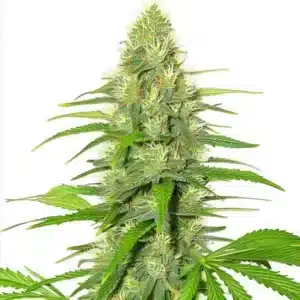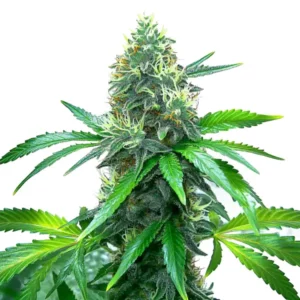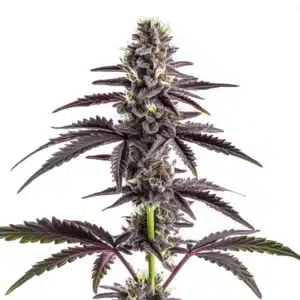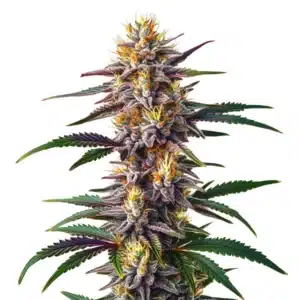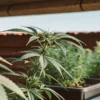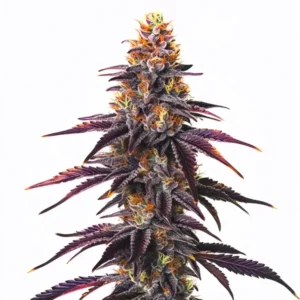
How Light Quality Triggers Flowering in Cannabis
How Light Quality Triggers Flowering in Cannabis is a key factor every grower should understand. Light quality plays a crucial part in the flowering of cannabis. The flowering stage is where your plants start to produce the buds, which are the main yield for growers. It’s all about providing plants with the right light conditions to stimulate this critical phase.
Different wavelengths of light influence cannabis in various ways. The optimal light spectrum for cannabis flowering includes a mix of red and blue light. Red light encourages blooming, while blue light helps maintain plant structure. A balance of these can lead to a successful yield.
Recommended Strains
White Widow
|
|
THC | 18% - 25% (Medium) |
|
|
Type | Feminized |
|
|
Yield | High |
|
|
Phenotype | 45% Indica / 55% Sativa |
OG Kush
|
|
THC | 20% - 24% (Medium) |
|
|
Type | Feminized |
|
|
Yield | Medium |
|
|
Phenotype | 55% Indica / 45% Sativa |
For first-time growers, this might sound complicated, but it’s quite manageable. By adjusting light quality, you can trigger the flowering phase effectively. This means you need to consider both the light spectrum and intensity to get those beautiful blooms.
Optimal Light Spectrum for Cannabis Flowering
When discussing the optimal light spectrum for cannabis flowering, it’s essential to focus on the reds and blues. Red light, around 660 nm, is particularly effective in promoting flowering. It signals the plant that it’s time to bloom, mimicking the natural light of late summer.
Blue light, on the other hand, keeps the plant compact and bushy. This is important because you want to encourage dense bud formation without your plants getting too tall or lanky. Balancing both wavelengths can ensure healthy growth and abundant flowering.
Knowing how light quality triggers flowering in cannabis involves recognizing the significance of the light spectrum. For instance, ultraviolet light can also play a role by enhancing resin production in some strains. This means that beyond just red and blue, full-spectrum lighting can be advantageous.
Tailoring the light spectrum to the specific needs of your cannabis strain can lead to remarkable improvements. Whether it’s for boosting terpene profiles or enhancing color, the optimal light spectrum for cannabis flowering can be a game-changer in cultivation practices.
Effects of Light Quality on Cannabis Bloom
Quality light affects how well your cannabis plants bloom. How Light Quality Triggers Flowering in Cannabis is a key factor for growers to understand, as the right spectrum can make a big difference in yields. If you’re using LED lights, look for options that provide both red and blue wavelengths. You might find that some strains, like those from Blimburn Seeds, respond particularly well under certain light conditions.
For example, the White Widow strain is known for its robust growth under a well-balanced spectrum. Light quality influences the density and aroma of the buds, making it a key factor for any grower.
The effects of light quality on cannabis bloom are profound, with the potential to alter both the yield and quality of the harvest. By focusing on the specific needs of your plants, you can enhance not only the quantity but also the potency and flavor of your buds.
Ultimately, knowing the effects of light quality on cannabis bloom allows for more personalized cultivation strategies. This knowledge empowers growers to create optimal conditions for their plants, ensuring that every harvest is as successful as possible.
Promos & Deals
Cannabis Photoperiod Sensitivity to Light
Cannabis plants are very sensitive to changes in light cycles. This is known as photoperiod sensitivity. By altering the light cycle, you can naturally trigger the flowering stage. Typically, growers switch to a 12/12 light cycle to induce flowering.
Some strains, like OG Kush, are more sensitive to these changes. They might start flowering sooner or later depending on the light exposure. It’s a fascinating process that requires some observation and adjustment.
Cannabis photoperiod sensitivity to light is a critical aspect of indoor cultivation, where growers can manipulate light cycles to suit their schedules. This manipulation allows for multiple harvests per year, optimizing the use of indoor growing spaces.
Knowing and managing cannabis photoperiod sensitivity to light is essential for maximizing the potential of each plant. By carefully adjusting light cycles, growers can synchronize flowering times, ensuring that all plants reach their peak at the same moment.
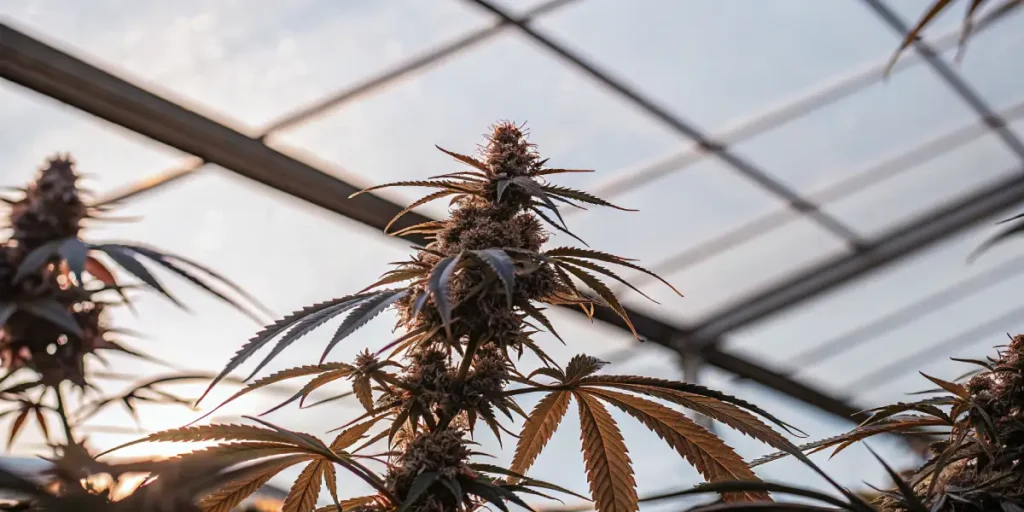
Influence of Light Wavelength on Cannabis Flowering
Different light wavelengths play specific roles in cannabis flowering. Red wavelengths, for example, are crucial for encouraging bloom. When plants receive more red light, they think it’s late summer and start to flower.
Another example is the Blue Dream strain, which thrives under specific light wavelengths. Using lights that mimic the natural spectrum can lead to a healthier, more productive plant.
The influence of light wavelength on cannabis flowering is not limited to red and blue alone. Far-red light, for instance, can help extend the flowering period, potentially increasing the size and density of the buds.
Experimenting with the influence of light wavelength on cannabis flowering can reveal new opportunities for increasing quality and yield. Adjusting wavelengths to match the needs of specific strains can lead to breakthroughs in cultivation techniques.
Role of Light Intensity in Cannabis Flowering
Light intensity also plays a key role in cannabis flowering. High-intensity light can boost photosynthesis, leading to more vigorous growth and larger buds. However, too much intensity can stress your plants.
Finding the right balance is crucial. If you’re using high-intensity LEDs, make sure they’re not too close to the canopy. Adjusting the height and intensity can help you achieve optimal results without damaging your plants.
The role of light intensity in cannabis flowering is a crucial consideration for indoor growers. Proper management of intensity ensures that plants receive enough energy for robust growth without suffering from light burn.
By knowing the function of light intensity in cannabis flowering, growers can create a thriving environment that maximizes the potential of each plant. This balance is key to achieving a healthy and productive crop.
Practical Tips for Managing Light Intensity
Start by placing your lights at a safe distance from your plants. Gradually reduce the distance as they grow, ensuring they receive ample light without overheating. This method works well for both novice and seasoned growers.
Consider using a light meter to measure the intensity at the canopy level. This tool can help you adjust your setup to provide the perfect amount of light. Remember, each strain may have different needs, so keep an eye on how your plants respond.
Practical tips for managing light intensity include monitoring plant responses closely. Look for signs of light stress, such as yellowing leaves or curling tips, and adjust the light setup accordingly to maintain plant health.
Utilizing practical tips for managing light intensity can lead to more efficient and effective growing practices. As you become more attuned to your plants’ needs, you’ll find it easier to make adjustments that lead to better yields and healthier plants.
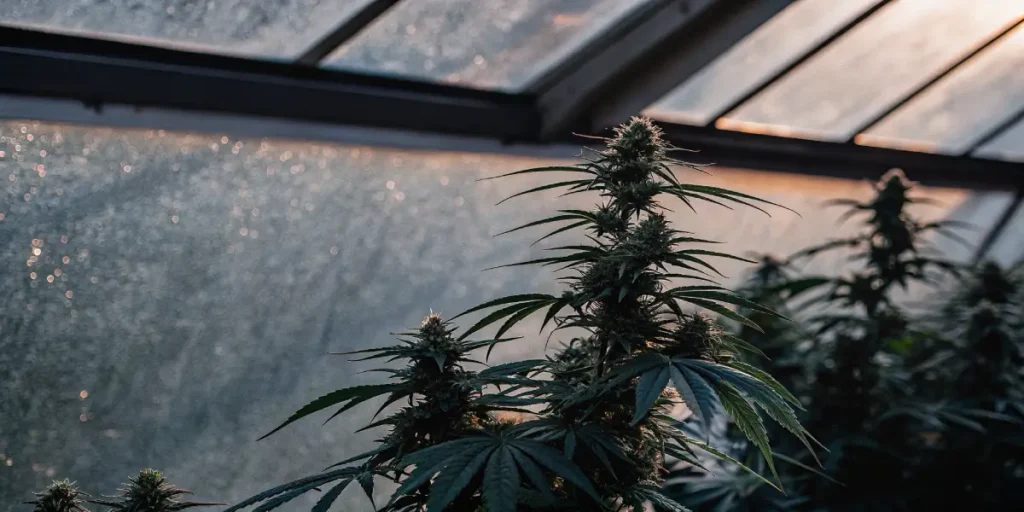
FAQs
What is the optimal light spectrum for cannabis flowering?
The optimal light spectrum for cannabis flowering generally includes a mix of red and blue wavelengths. Red light promotes flowering by mimicking late summer sunlight, while blue light helps maintain a compact structure. This combination supports healthy flowering.
For example, using full-spectrum LED lights can provide the necessary balance for strains like White Widow. This setup encourages robust growth and enhances the quality of the buds, crucial for maximizing your yield.
Knowing how light quality triggers flowering in cannabis involves recognizing the importance of the optimal light spectrum for cannabis flowering. This knowledge allows growers to customize lighting solutions to meet the specific needs of their crops.
By focusing on the optimal light spectrum for cannabis flowering, you can ensure that your plants receive the right signals to enter the flowering stage, leading to a more abundant and high-quality harvest.
How does light quality affect cannabis bloom?
Light quality significantly affects cannabis bloom by influencing the density and aroma of the buds. High-quality light, with the right spectrum, ensures that plants develop strong and flavorful flowers. This is essential for both potency and yield.
Choosing the right light setup, such as those with adjustable spectrums, can benefit strains like OG Kush. By fine-tuning the light quality, you can achieve a harvest that’s both abundant and potent.
The effects of light quality on cannabis bloom are profound, impacting not only the physical characteristics of the buds but also their chemical composition. This means that the right light can enhance cannabinoid and terpene production.
Ultimately, knowing how light quality affects cannabis bloom is key to achieving the best results. By optimizing light conditions, growers can unlock the full potential of their plants, ensuring a rewarding cultivation experience.
Why is cannabis photoperiod sensitivity to light important?
Cannabis photoperiod sensitivity to light is important because it determines when the plant will start to flower. By manipulating the light cycle, typically to a 12/12 split, growers can control the timing of the flowering phase, optimizing the growth period.
This sensitivity is crucial for strains like Blue Dream, which may require specific light conditions to begin flowering. Knowing and managing photoperiod sensitivity can lead to more predictable and successful harvests.
Cannabis photoperiod sensitivity to light is a cornerstone of successful indoor cultivation. By knowing this sensitivity, growers can plan their grow cycles more effectively, leading to consistent and reliable results.
Mastering cannabis photoperiod sensitivity to light allows growers to take full control of their plants’ development. This control is vital for maximizing yield and ensuring that every plant reaches its full potential.
What is the influence of light wavelength on cannabis flowering?
Light wavelength influences cannabis flowering by signaling certain growth stages. Red wavelengths encourage the plant to enter the flowering stage, while blue wavelengths support vegetative growth. This interaction is key to successful cultivation.
Experimenting with different wavelengths can optimize growth for strains like Gelato. By adjusting the light wavelengths, you can control the flowering time and improve bud quality, leading to a better overall yield.
The influence of light wavelength on cannabis flowering extends beyond traditional red and blue spectrums. Incorporating far-red and UV light can enhance certain traits, such as resin production and flower density.
Exploring the influence of light wavelength on cannabis flowering can lead to innovative growing techniques. By tailoring light conditions to specific strain needs, growers can achieve remarkable improvements in both yield and quality.
How does light intensity affect cannabis flowering?
Light intensity affects cannabis flowering by regulating photosynthesis and growth rate. High-intensity light can enhance bud development, but excessive intensity might stress the plants and hinder growth. Balancing intensity is essential for healthy plants.
Using tools like light meters can help you maintain the right intensity, especially for sensitive strains like White Widow. Proper management of light intensity ensures that your cannabis plants thrive, producing dense and potent buds.
The role of light intensity in cannabis flowering is crucial for achieving optimal growth. By carefully monitoring and adjusting intensity levels, growers can ensure that their plants receive the energy they need without suffering from stress.
Knowing how light intensity affects cannabis flowering allows for more precise control over the growing environment. This control is essential for maximizing the potential of each plant and achieving a successful harvest.


